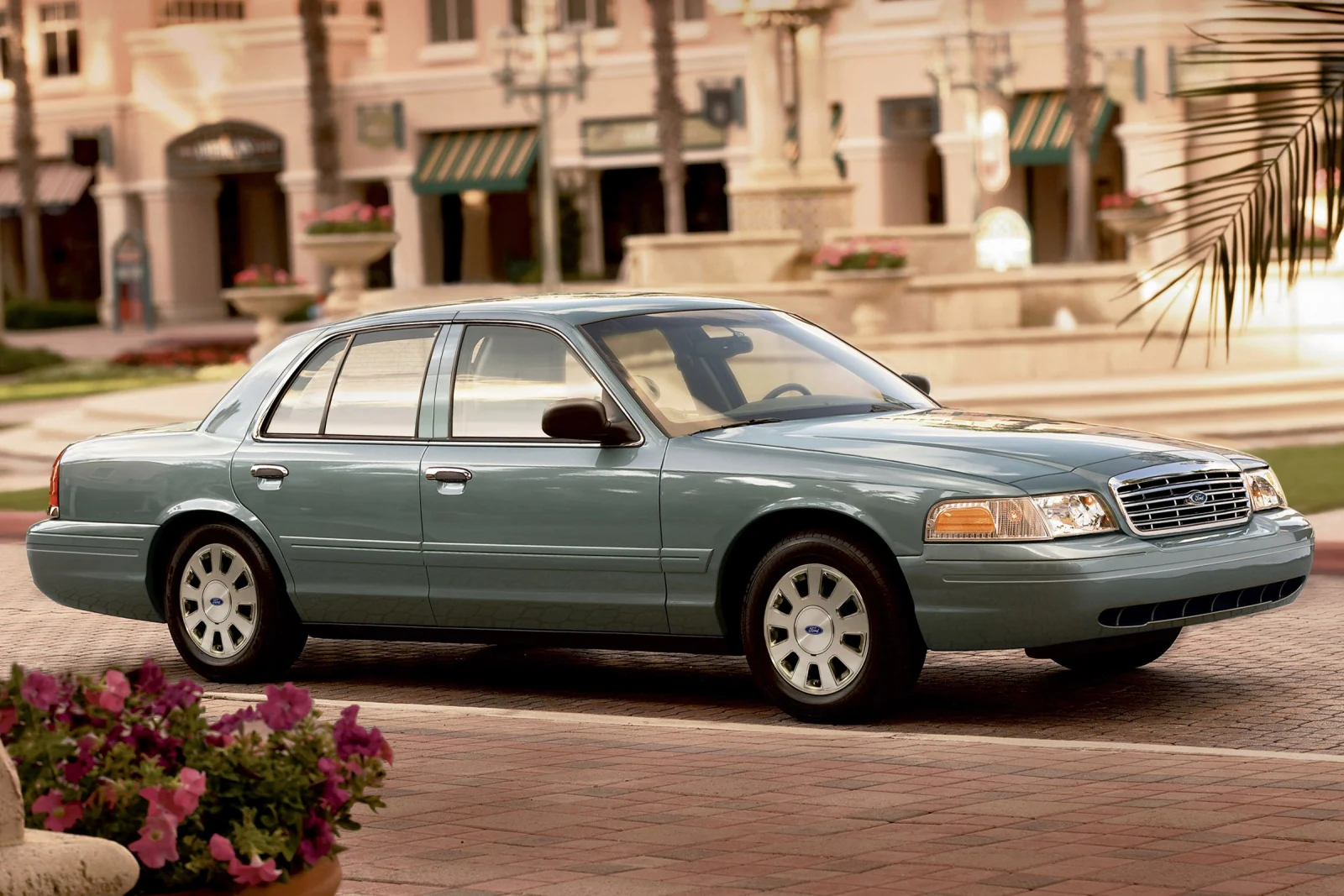When it comes to automotive reliability, the engine’s cooling system is often an unsung hero. Among the many components involved in maintaining optimal engine temperatures, the radiator stands out as a critical part. Its primary role is to dissipate heat from the engine coolant, preventing the engine from overheating and sustaining damage.
A well-functioning radiator not only safeguards the engine’s performance but also prolongs the overall lifespan of the vehicle. However, not all radiators are created equal.
Some vehicles boast radiators that seem to last forever, enduring harsh conditions and high mileage with minimal issues, while others suffer from chronic overheating problems, requiring frequent repairs or replacements.
Understanding what makes a radiator durable or prone to failure involves looking beyond just the component itself—it means examining the entire vehicle design, materials used, engineering philosophies, and even maintenance practices.
Radiator longevity is a blend of intelligent engineering, quality materials, and system integration. Vehicles with long-lasting radiators often benefit from designs that optimize heat dissipation without inducing mechanical stress, employ corrosion-resistant materials such as aluminum cores and durable composite tanks, and feature cooling system layouts that maintain stable operating conditions.
Additionally, supporting components like hoses, water pumps, thermostats, and electric cooling fans play a crucial role in preserving radiator health by ensuring consistent coolant flow and temperature regulation.
Manufacturers known for reliability often pay meticulous attention to these factors, resulting in radiators that can endure hundreds of thousands of miles and harsh driving environments without failure.
On the other hand, radiators that overheat frequently tend to suffer from design flaws, subpar materials, or integration issues. Thin radiator cores prone to clogging or corrosion, poor airflow management, and cooling systems that overwork under heavy thermal loads contribute to early failure.
Moreover, vehicles operating in extreme climates or under strenuous conditions without adequate maintenance are more susceptible to radiator problems.
Understanding which vehicles excel in this aspect and which struggle provides invaluable insight for prospective car buyers, enthusiasts, and anyone interested in automotive durability. Choosing a vehicle with a robust cooling system can save significant costs, inconvenience, and potential engine damage over time.
This article dives deep into the world of radiators, highlighting five vehicles renowned for having radiators that last seemingly forever, and contrasts them with five models known for daily overheating issues. The vehicles with reliable radiators are typically backed by well-engineered cooling systems that harmonize material quality, component design, and ease of maintenance.
These cars not only provide peace of mind but also reflect the manufacturers’ commitment to durability and long-term ownership value.
Conversely, vehicles prone to overheating highlight common pitfalls such as inferior materials, complex or inefficient cooling architectures, and poor integration with other engine systems. By examining both ends of the spectrum, this article aims to provide a comprehensive understanding of radiator durability and help readers make informed decisions based on their automotive needs.
Whether you are a daily commuter, a long-distance traveler, or an automotive enthusiast, knowing which vehicles have radiators that can withstand the test of time—and which might cause headaches—can be a game changer. Radiator issues can lead to engine overheating, resulting in reduced performance, expensive repairs, and in extreme cases, complete engine failure.
Investing in a vehicle with a proven, durable cooling system protects your investment and ensures smoother, safer driving experiences. So, buckle up as we explore the engineering excellence behind some of the most durable radiators on the market and uncover the challenges faced by those who struggle to keep cool under pressure.
Also Read: Top 10 Long-Lasting Cars That Get Over 30 MPG
5 Cars With Radiators That Last Forever
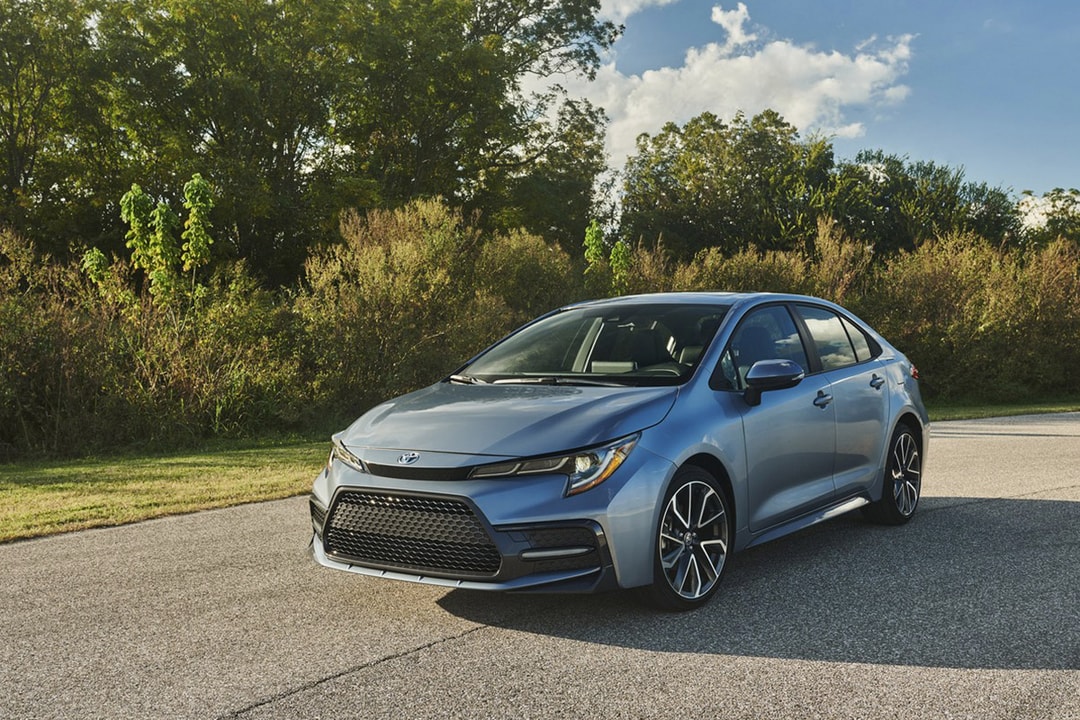
1. Toyota Corolla
The Toyota Corolla has long been heralded as one of the most reliable vehicles on the road, and much of that reputation stems from the longevity of its core components, especially the radiator. The radiator in the Corolla is engineered with a focus on durability and simplicity, reflecting Toyota’s broader philosophy of building practical, no-nonsense cars that last.
Unlike some vehicles that employ exotic materials or overly complicated cooling systems, the Corolla’s radiator features a robust aluminum core combined with plastic tanks designed to resist cracking and corrosion over many years. This combination not only helps dissipate heat efficiently but also reduces the risk of leaks or structural failures.
Moreover, Toyota’s decision to use widely available materials means repairs and replacements, if ever needed, are affordable and straightforward, contributing to the vehicle’s overall ownership satisfaction.
Over the decades, countless Corolla owners have reported their radiators functioning flawlessly even as their cars exceed 200,000 miles, demonstrating how a thoughtful, proven design can beat flashier but less reliable alternatives.
Part of the Corolla’s radiator longevity comes down to the entire cooling system’s well-balanced engineering. Toyota’s approach avoids pushing the engine to its thermal limits, allowing the radiator to perform its role without excessive stress.
The coolant flow is carefully managed through a series of hoses and a water pump that operates with exceptional reliability, circulating coolant smoothly and preventing the buildup of hotspots within the engine.
This steadiness is crucial in preserving radiator life, as thermal spikes or uneven cooling often cause warping or premature failure in lesser vehicles. Additionally, the Corolla’s cooling fans are controlled by well-calibrated thermostats that respond precisely to temperature changes, maintaining optimal airflow even when the car is idling or crawling through traffic.
This means the radiator doesn’t suffer from chronic overheating or thermal fatigue, two leading causes of radiator breakdown. In regions with hotter climates or stop-and-go traffic, Corolla owners appreciate this dependable cooling performance, which allows them to avoid the costly repairs or unexpected breakdowns that plague many other cars.
Another reason for the Corolla’s radiator resilience is how the engine bay is designed to facilitate airflow. Toyota engineers allocate sufficient space at the front of the vehicle, ensuring that the radiator receives ample cool air, especially at highway speeds.
This design avoids the common pitfall of cramped engine compartments that restrict airflow and trap heat, conditions that accelerate radiator wear.
Furthermore, the Corolla’s radiator hoses and clamps are of high quality and are installed in straightforward, easy-to-access locations. This not only simplifies routine maintenance, such as coolant flushes or hose replacements, but also reduces the chance of accidental damage during servicing.
The accessibility of the radiator system means that even non-expert owners can keep an eye on its condition, catching potential issues early before they escalate.
Mechanics often praise the Corolla for its service-friendly cooling system design, which translates to lower maintenance costs and higher owner confidence. In a market where repair bills can be unpredictable, the Corolla’s radiator reliability offers a welcome sense of security.
Finally, the Corolla’s longevity extends beyond just the physical parts—it’s about the ownership experience. Because the radiator and associated components rarely fail, Corolla owners avoid the frustrating cycle of repeated coolant leaks, overheating warnings, or costly radiator replacements.
The peace of mind that comes with a cooling system you can trust is invaluable, especially for drivers who rely on their vehicle daily for commuting, errands, or road trips. This dependability also positively impacts the resale value of the car, as used Corolla buyers recognize the value of a vehicle whose radiator and cooling system are unlikely to require major work anytime soon.
From a broader perspective, Toyota’s radiator design philosophy showcases how investing in durable components pays dividends in customer satisfaction and brand loyalty. The Corolla’s radiator is a prime example of how simple, solid engineering can result in a component that truly lasts a lifetime.
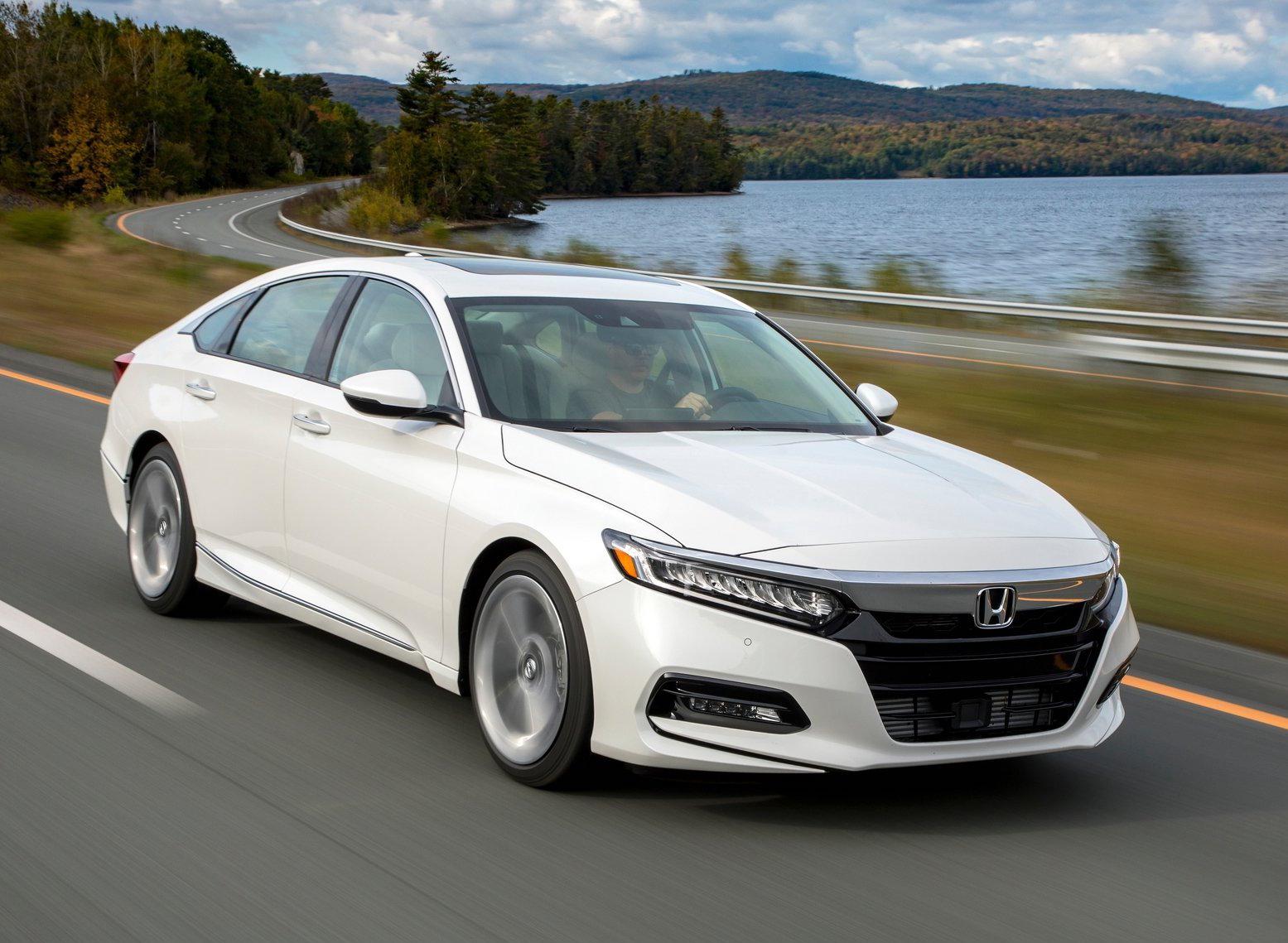
2. Honda Accord
The Honda Accord has earned a stellar reputation as a midsize sedan that combines comfort, performance, and, crucially, remarkable reliability—particularly in its cooling system. The radiator in the Accord exemplifies Honda’s commitment to precision engineering and quality manufacturing.
Utilizing a heavy-duty aluminum core with reinforced composite tanks, the Accord’s radiator is designed to withstand the thermal stresses associated with both everyday driving and more demanding conditions such as stop-and-go city traffic or extended highway cruising.
This robust construction ensures that the radiator resists corrosion, leaks, and warping over the vehicle’s lifespan, often exceeding 150,000 miles without significant issues. The Accord’s radiator also benefits from a highly efficient heat exchanger design that maximizes surface area for heat dissipation, contributing to stable engine operating temperatures and reduced wear on related components.
This design excellence is backed by decades of refinement, with newer Accord models featuring even more advanced cooling technologies to extend radiator life further.
One of the most critical factors in the Accord’s radiator durability is the intelligent cooling system layout. Honda’s engineers have meticulously optimized coolant flow through the engine block and radiator, ensuring even heat distribution and rapid dissipation.
The precise operation of the thermostat means coolant is only allowed to circulate when needed, preventing unnecessary thermal cycling that can lead to radiator fatigue. Moreover, many newer Accord models employ dual electric cooling fans that automatically adjust speed based on temperature and engine load, maintaining consistent airflow and preventing overheating in all conditions.
This level of control is especially valuable in urban environments where the engine may idle for extended periods and natural airflow is limited. As a result, the radiator experiences less thermal stress, extending its effective lifespan. Owners report that the Accord’s cooling system rarely triggers warning lights, and radiator failures are infrequent, making it a favorite among those seeking a dependable daily driver.
Beyond raw durability, the Accord’s radiator system stands out due to its thoughtful integration with other components. The placement of the radiator in the engine bay maximizes exposure to incoming air while minimizing exposure to dirt and debris that could clog cooling fins or cause premature wear.
The cooling system also includes a reliable water pump and durable coolant hoses, all designed to work in harmony and reduce strain on the radiator itself. This integrated approach minimizes the likelihood of cascading failures, where one component’s malfunction leads to radiator damage.
Furthermore, Honda’s wide availability of OEM and aftermarket parts means that if a radiator or its related components ever require replacement, quality parts are accessible at reasonable prices, easing maintenance concerns for owners.
Routine coolant changes and simple inspections are all that is typically needed to keep the Accord’s radiator in peak condition. The result is a cooling system that not only lasts but also remains efficient throughout the vehicle’s lifetime.
Importantly, the Honda Accord’s radiator reliability translates to real-world benefits for drivers beyond just mechanical soundness. A radiator that performs consistently means fewer unexpected breakdowns, less time spent at repair shops, and overall lower vehicle ownership costs.
Drivers in areas with extreme weather—whether scorching summers or freezing winters—can count on the Accord’s cooling system to maintain safe engine temperatures without fuss. This reliability also supports the vehicle’s reputation for longevity; many Accords have been known to run smoothly past 200,000 miles with their original radiator intact. For families, commuters, and enthusiasts alike, the
Accord’s proven radiator durability is a significant factor in the vehicle’s enduring popularity. In the competitive midsize sedan market, Honda’s unwavering attention to cooling system quality gives the Accord an edge that keeps it in high demand across generations.
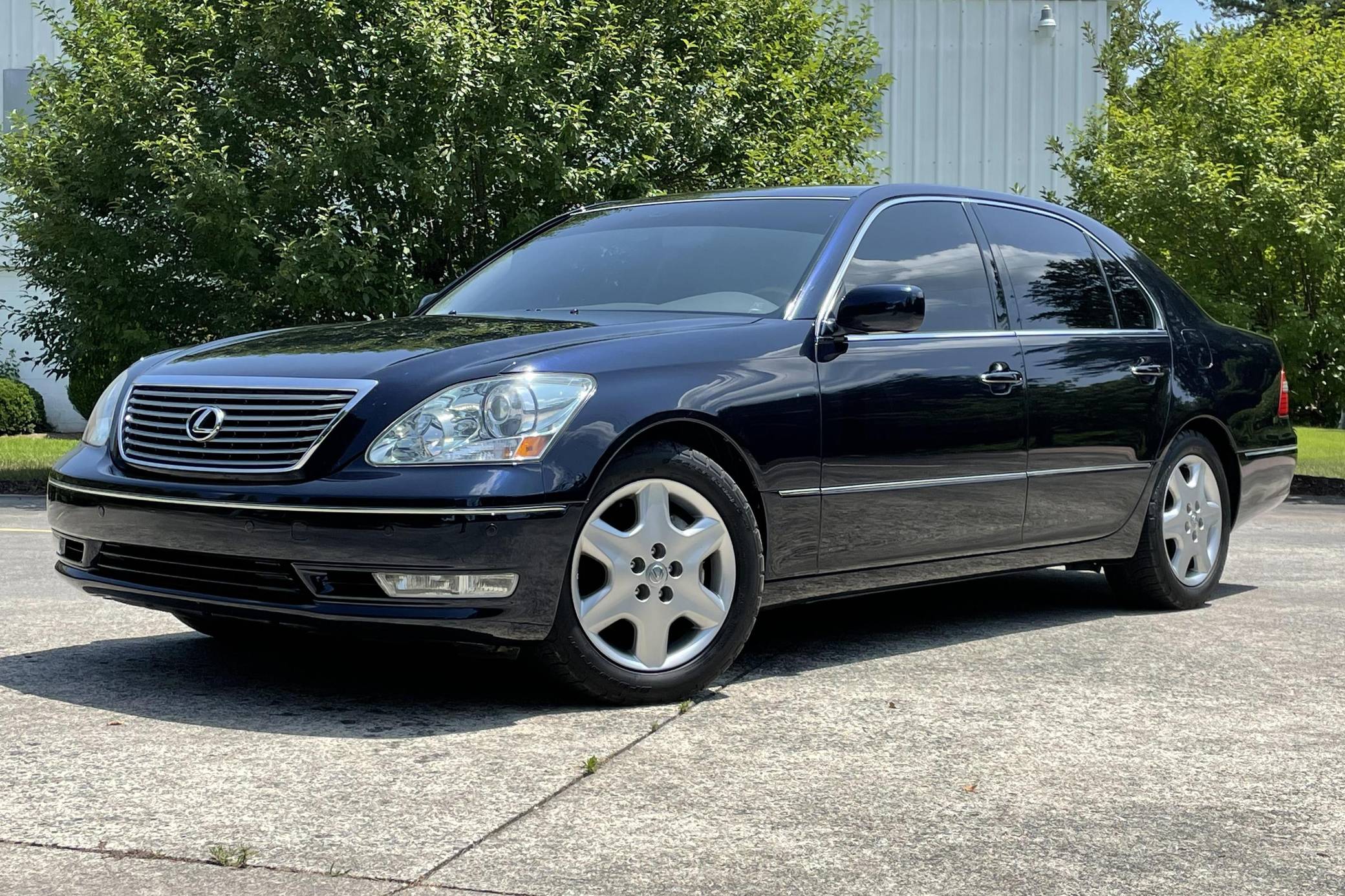
3. Lexus LS
Luxury vehicles are often associated with high-performance components and cutting-edge technology, but they are not always synonymous with long-term mechanical durability, especially when it comes to the radiator and cooling system. However, the Lexus LS defies this stereotype by combining opulence with exceptional reliability, particularly in its radiator design.
Lexus engineers have invested heavily in ensuring that the LS’s cooling system is over-engineered to withstand years of thermal cycling and demanding driving conditions. The radiator itself features a high-capacity aluminum core with corrosion-resistant coatings, paired with reinforced plastic tanks that prevent cracking and coolant leaks.
This design not only supports the powerful V8 or V6 engines commonly found in the LS but also ensures stable and consistent operating temperatures over hundreds of thousands of miles.
Lexus’s commitment to quality is evident in the meticulous testing each radiator undergoes, including exposure to extreme heat, cold, and road vibration, ensuring that it maintains integrity even in harsh environments.
A major advantage of the Lexus LS radiator is its sophisticated cooling architecture. Unlike many vehicles that rely on a single radiator and fan setup, the LS employs a multi-layered cooling strategy that often includes dual fans, an auxiliary radiator for the transmission, and redundant coolant pathways.
This system ensures that even under heavy loads—such as towing, mountainous driving, or stop-and-go city traffic—the cooling system maintains an optimal temperature balance. The radiator benefits from carefully controlled airflow patterns, with vents and ducting engineered to maximize cooling efficiency while minimizing noise and vibration.
These features allow the LS to maintain a steady temperature gauge reading, avoiding the temperature fluctuations that often stress radiators in other vehicles. Furthermore, Lexus’s attention to component quality extends to hoses, clamps, and water pumps, which are all built to exacting standards to complement the radiator’s durability.
The Lexus LS radiator also stands out for its maintenance-friendly design despite being a luxury sedan. While some luxury cars are notorious for complex engine bays and difficult access to components, the LS offers relatively straightforward access to the radiator and related cooling system parts.
This reduces labor time and costs should any repairs or replacements become necessary, and it encourages owners to adhere to regular maintenance schedules, further extending the radiator’s lifespan. Additionally, Lexus uses high-grade coolant formulations that resist corrosion and deposits, protecting the radiator from internal damage over time.
Owners who keep up with recommended service intervals often report no radiator-related issues even after 200,000 miles or more, a remarkable achievement in the luxury segment.
Finally, the Lexus LS’s radiator reliability enhances the overall ownership experience in subtle but important ways. A stable and effective cooling system contributes to engine longevity, smoother performance, and consistent fuel efficiency, all of which support the LS’s reputation as a refined and dependable luxury sedan.
Drivers enjoy peace of mind knowing their radiator is unlikely to fail unexpectedly, and this confidence is reinforced by the brand’s strong track record of durability.
The quiet operation of the cooling fans and the absence of overheating warnings contribute to the LS’s serene cabin environment, aligning with its luxury ethos. In essence, the Lexus LS’s radiator is a testament to how luxury and durability can coexist, delivering a driving experience that is both indulgent and worry-free.

4. Subaru Outback
The Subaru Outback is renowned for its versatility, ruggedness, and ability to handle diverse driving conditions, from snowy mountain passes to muddy trails. What often goes unnoticed, however, is how its radiator contributes to this reputation by providing a durable, efficient cooling solution that withstands a wide range of stresses.
The Outback’s radiator is uniquely designed to accommodate the boxer engine layout, which offers a lower center of gravity but presents unique challenges for cooling system design. Subaru engineers have addressed these challenges by equipping the Outback with a larger-than-average radiator, allowing more coolant to flow through a greater surface area.
This design choice significantly reduces thermal load per square inch, enabling the radiator to dissipate heat more effectively and operate at lower temperatures compared to smaller radiators.
The radiator’s construction typically features corrosion-resistant aluminum with reinforced plastic tanks, making it resilient against leaks, cracks, and rust, common failure points in less robust systems.
One standout feature of the Outback’s radiator system is its dual cooling fan setup, which ensures that adequate airflow is maintained even during demanding conditions such as slow off-road driving or heavy towing.
The fans are controlled by temperature sensors that provide real-time feedback, dynamically adjusting fan speed to optimize cooling without wasting energy or creating unnecessary noise.
This intelligent system protects the radiator from overheating by keeping coolant flow steady and temperatures consistent, even when the vehicle is climbing steep grades or navigating challenging terrain. The Outback’s thermostat is similarly tuned for precise operation, opening and closing at optimal points to regulate coolant circulation.
These design elements combine to give the Outback a cooling system that is notably durable, with many owners reporting their radiators performing well beyond 150,000 miles without intervention.
Subaru’s emphasis on ease of maintenance also plays a critical role in the Outback’s radiator longevity. The vehicle’s engine bay layout is relatively straightforward, making it easier for technicians and DIY enthusiasts to perform coolant flushes, inspect radiator fins, and replace hoses as needed.
The availability of high-quality OEM parts and Subaru’s clear maintenance guidelines encourage regular upkeep, which is essential for preventing corrosion and buildup that could otherwise shorten the radiator’s lifespan.
Additionally, the Outback’s radiator is designed to handle altitude changes and pressure variations well, which is particularly important given its popularity in mountainous regions. This adaptability ensures consistent cooling performance regardless of geographic location or weather conditions, adding to the vehicle’s all-weather appeal.
Lastly, the Subaru Outback’s radiator durability is a vital component of the car’s overall reputation for reliability and ruggedness. Drivers who rely on their Outbacks for outdoor adventures or harsh climates can trust that their cooling system will not be a weak link in their vehicle’s performance.
The combination of robust materials, intelligent fan controls, and a larger radiator size creates a system that is well-equipped to handle the Outback’s diverse mission profile.
This resilience translates to fewer trips to the mechanic for radiator-related repairs and less downtime, which is invaluable for drivers who depend on their car for work or leisure. The Outback’s radiator longevity is an often-overlooked aspect of its appeal but one that solidifies its status as a dependable and versatile crossover wagon.
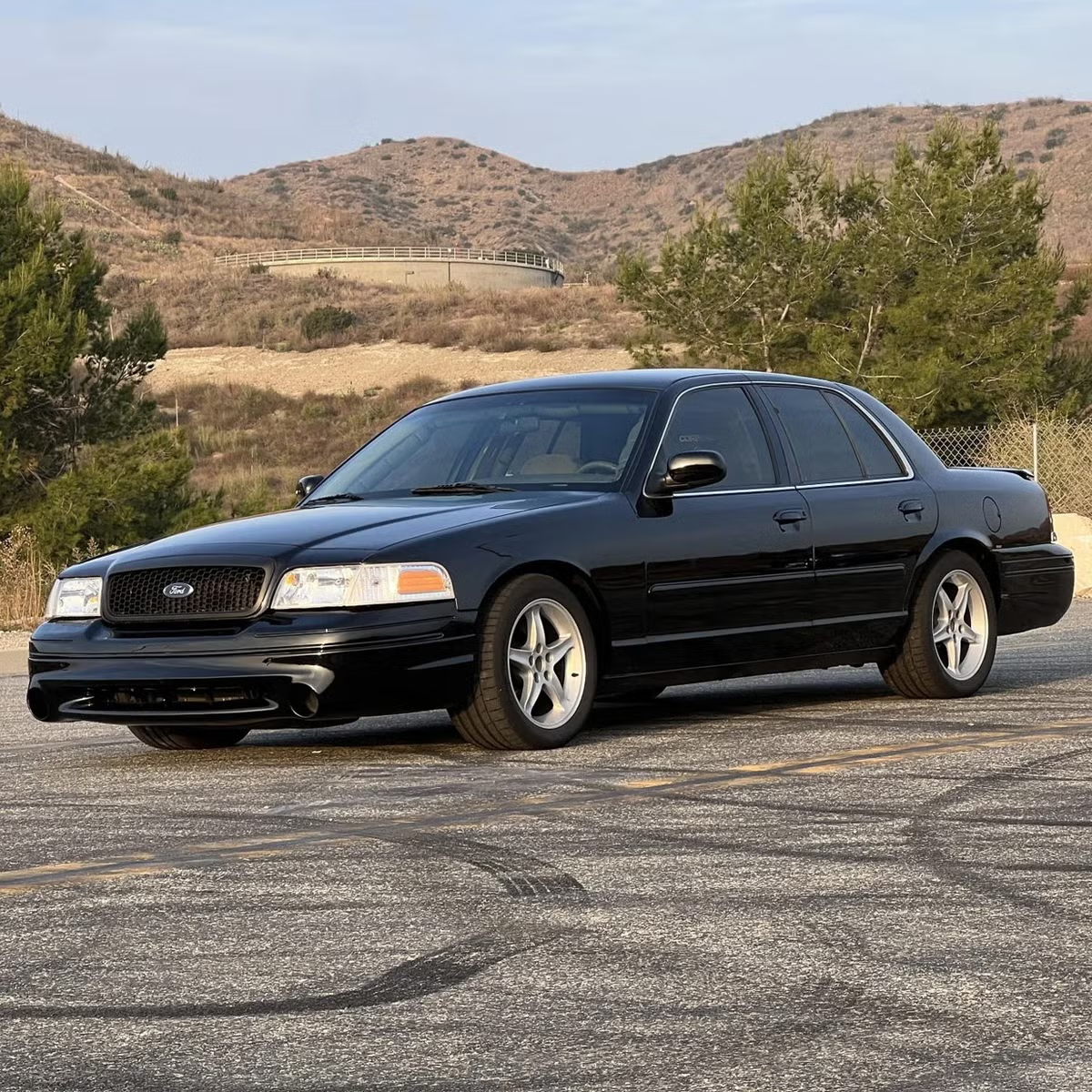
5. Ford Crown Victoria
The Ford Crown Victoria is a legendary workhorse, known for its extensive use as a police cruiser, taxi, and fleet vehicle. One of the secrets behind its legendary durability lies in its cooling system, particularly its radiator, which is famously tough and reliable.
Built to withstand the rigors of high-mileage, high-speed driving and idling in demanding conditions, the Crown Victoria’s radiator features a heavy-duty aluminum core with thick, robust cooling fins designed for maximum heat dissipation. The plastic tanks are reinforced to resist cracking, and the radiator is engineered to operate efficiently even under prolonged thermal stress.
Its design simplicity is part of its strength—there are fewer delicate components, and the system is built with serviceability in mind, allowing quick access and easy replacement when necessary. Many Crown Victorias have been known to run well past 200,000 miles on their original radiators, making it a benchmark for durability in the full-size sedan segment.
A major contributor to the Crown Victoria’s radiator longevity is its naturally aspirated V8 engine’s cooling demands, which are relatively steady and predictable compared to more modern turbocharged engines. The cooling system includes a large, single radiator mounted in a spacious engine bay, allowing for excellent airflow and efficient heat transfer.
The radiator is paired with an electric fan that kicks in when needed, controlled by a reliable thermostat that prevents overheating. The robust construction of the cooling system components—including the hoses, clamps, and water pump—ensures the radiator is not subjected to sudden pressure spikes or fluid flow issues that commonly cause failures in other vehicles.
Additionally, Ford’s straightforward design philosophy means there are fewer points of failure or unnecessary complexity, reducing the chances of radiator-related breakdowns.
Maintenance ease is another factor that has helped the Crown Victoria’s radiator maintain its reputation for longevity. With the radiator located in an accessible position at the front of the engine bay and a simple hose layout, routine coolant changes and inspections are hassle-free.
This accessibility makes it easier for fleet managers and private owners to keep the cooling system in optimal condition, preventing corrosion and deposits from accumulating inside the radiator. Moreover, the Crown Victoria’s widespread use has ensured that OEM replacement radiators and parts are affordable and easy to source.
This availability encourages regular maintenance rather than costly emergency repairs. Many police departments and taxi companies report that radiator failures are rare and often result from neglect rather than inherent design flaws, highlighting the system’s underlying robustness.
The Crown Victoria’s radiator reliability also contributes significantly to the vehicle’s legendary status as a dependable and enduring full-size sedan. Its ability to handle extended high-speed runs, idling in hot conditions, and heavy-duty usage without overheating problems has made it the vehicle of choice for demanding commercial and law enforcement applications.
The peace of mind that comes from knowing the radiator will not fail unexpectedly is invaluable in these contexts, where vehicle downtime can be costly and disruptive.
Even today, many Crown Victorias remain on the road, demonstrating the lasting value of a well-engineered radiator system. The Crown Victoria’s radiator exemplifies how durability, simplicity, and practical design converge to create a component that truly lasts forever.
5 Cars With Radiators That Last Forever
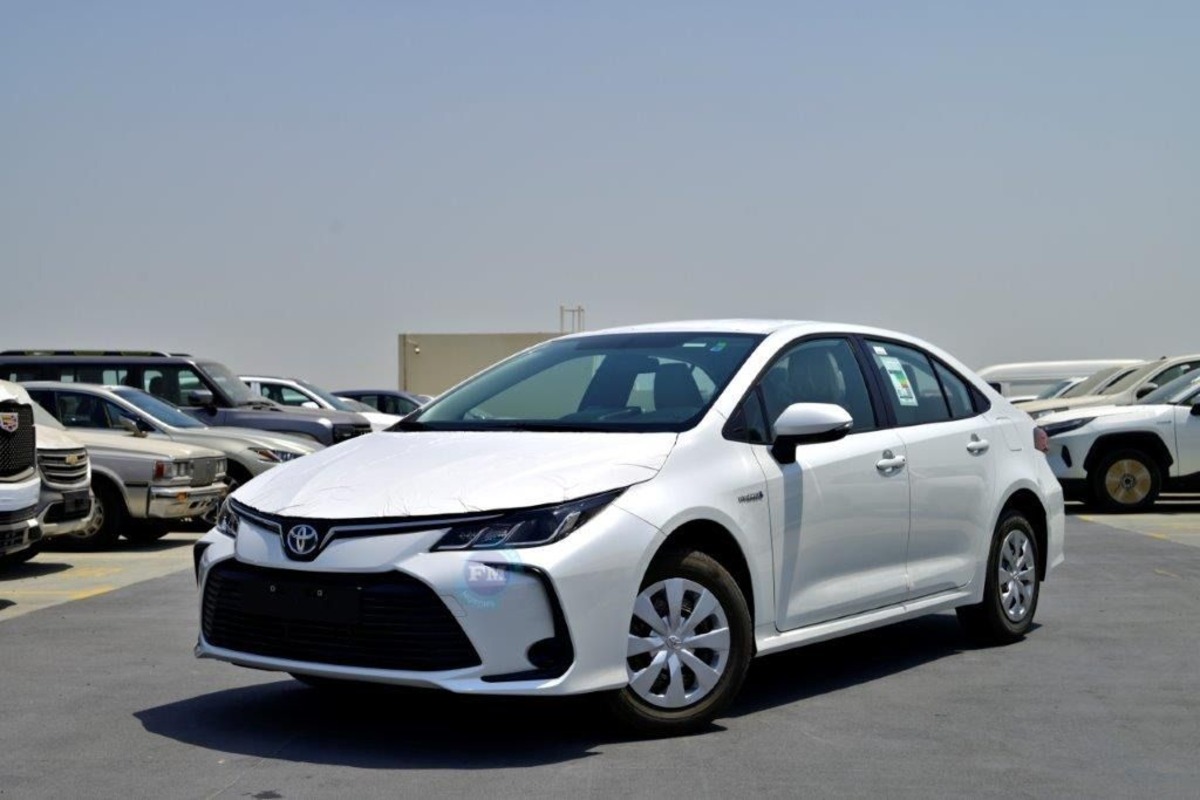
1. Toyota Corolla
The Toyota Corolla has established itself as a paragon of reliability in the automotive world, and a critical factor behind this reputation is the exceptional durability of its radiator. Since its inception in the 1960s, the Corolla has been engineered to prioritize longevity, and this ethos is deeply embedded in the design of its cooling system.
The radiator, in particular, benefits from Toyota’s meticulous attention to materials and manufacturing quality. It typically features a sturdy aluminum core paired with high-grade plastic tanks designed to resist thermal cycling and chemical degradation caused by coolant exposure.
This construction not only provides excellent heat transfer capabilities but also ensures that the radiator can endure the stresses of daily driving, including rapid temperature changes, road vibrations, and exposure to corrosive elements like road salt or engine chemicals.
Over the decades, the Corolla’s radiator design has evolved but remained fundamentally simple and robust, eschewing complex, failure-prone components in favor of tried-and-true materials and manufacturing methods that have proven their worth on millions of vehicles worldwide.
One of the key reasons the Corolla’s radiator lasts so long is the holistic approach Toyota takes to the entire cooling system. The radiator does not operate in isolation but as part of a carefully balanced network that includes hoses, water pumps, thermostats, and cooling fans.
Toyota’s engineering teams ensure that coolant flows smoothly and evenly through the system, preventing hot spots that can warp or crack the radiator. The water pump is designed for quiet, efficient operation and rarely fails prematurely, which means the radiator consistently receives the proper volume of coolant to do its job effectively.
Additionally, the thermostat is finely calibrated to maintain the engine’s temperature within an optimal range, allowing the radiator to operate under steady conditions rather than rapid cycling between hot and cold. This stable operating environment greatly reduces mechanical fatigue on the radiator’s fins and tanks.
The dual electric cooling fans, controlled by precise temperature sensors, further enhance radiator longevity by activating only when necessary, reducing wear from unnecessary airflow and power consumption. Toyota’s engineers also design the cooling system to excel in various climates, ensuring that whether a Corolla is navigating a freezing winter or a scorching summer, the radiator endures without failure.
Beyond the technical specifications, the Corolla’s radiator longevity benefits from the vehicle’s overall design philosophy—simplicity and serviceability. The radiator is mounted in a way that maximizes airflow, with a generous front grille opening that directs ambient air efficiently across the cooling fins.
This design mitigates heat buildup, even in dense traffic conditions where airflow is limited. Furthermore, Toyota’s use of durable radiator hoses and secure clamps helps maintain system integrity by preventing leaks and reducing vibration-induced damage.
Routine maintenance tasks such as coolant flushes or radiator inspections, are straightforward thanks to the accessible engine bay layout. This accessibility empowers owners and mechanics alike to perform regular upkeep, catching potential issues like coolant contamination or hose deterioration before they compromise radiator health.
The ease of servicing, coupled with the availability of affordable OEM parts, means that the radiator remains in optimal condition throughout the vehicle’s lifespan. This practical approach to design and maintenance cements the Corolla’s status as a car with a radiator that effectively “lasts forever” under typical driving conditions.
The Corolla’s radiator durability is not just an abstract engineering achievement; it translates into tangible benefits for drivers. Owners often share anecdotes of their vehicles surpassing 200,000 miles without needing a radiator replacement, a testament to the quality and resilience of the cooling system.
This reliability reduces the likelihood of unexpected breakdowns, which is crucial for daily commuters, families, and anyone relying on their vehicle for essential transportation. It also lowers ownership costs by minimizing the frequency of expensive repairs.
Moreover, a radiator that maintains efficient cooling ensures the engine runs at optimal temperatures, enhancing fuel efficiency and reducing emissions. This synergy between radiator reliability and overall engine health contributes to the Corolla’s reputation as one of the most dependable cars in automotive history.
In the resale market, a well-maintained Corolla with an original, healthy radiator is highly desirable, underscoring the long-term value of Toyota’s engineering choices. Ultimately, the Corolla’s radiator longevity exemplifies how thoughtful design, quality materials, and practical engineering can come together to produce a component—and a vehicle—that truly stands the test of time.
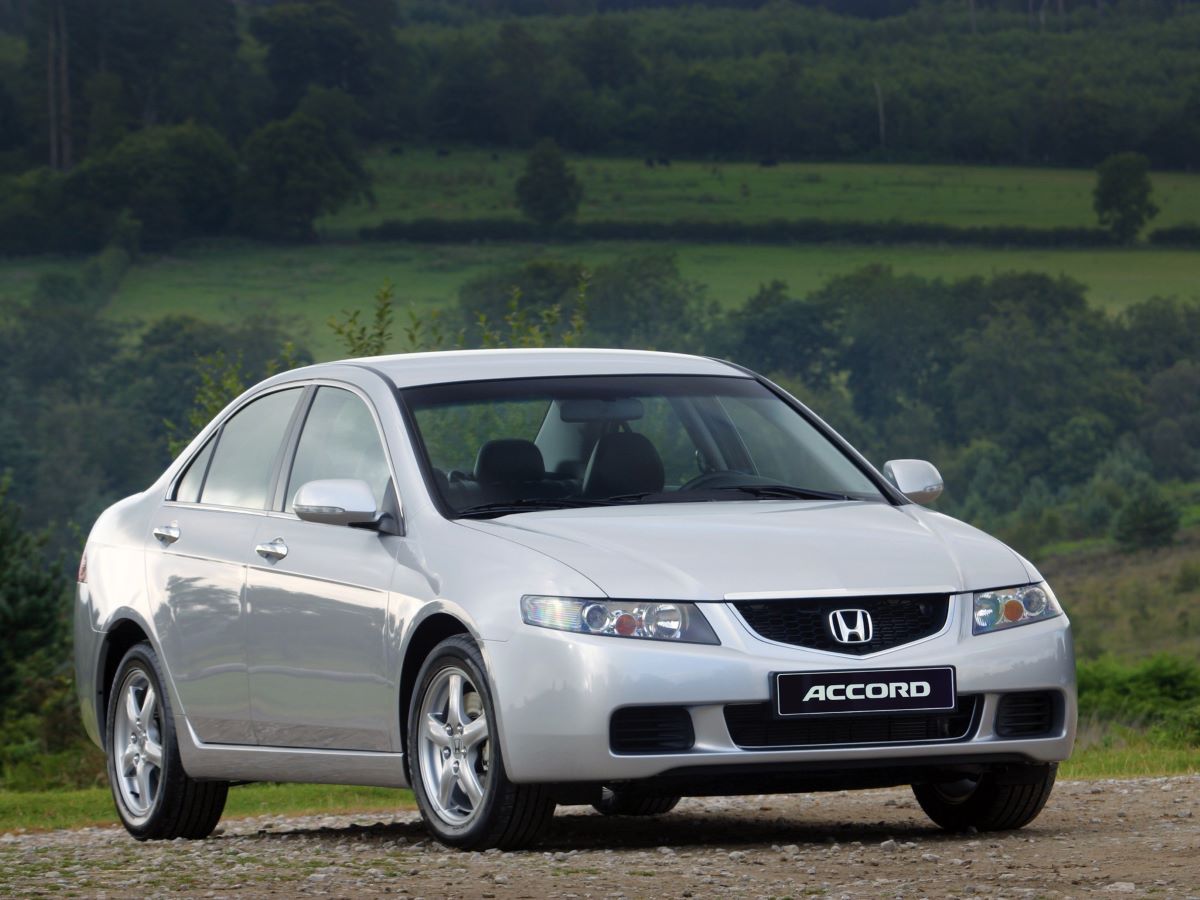
2. Honda Accord
The Honda Accord is widely celebrated for its balance of performance, comfort, and remarkable reliability, with its radiator playing a pivotal role in maintaining the engine’s optimal operating temperature.
Honda’s commitment to precision engineering is evident in the design of the Accord’s cooling system, which boasts a radiator built to endure the demands of diverse driving environments.
Typically constructed with a high-efficiency aluminum core and durable composite tanks, the Accord’s radiator excels in heat dissipation and resistance to corrosion, two key factors that extend its lifespan.
The core’s design often includes multiple rows of tubes and a dense array of cooling fins, which maximize the surface area available for heat exchange and thus enhance thermal management.
This sophisticated yet reliable construction allows the radiator to withstand the thermal stresses caused by frequent stop-and-go traffic, extended highway cruising, and varying weather conditions.
Over time, this design robustness results in fewer leaks, cracks, or blockages compared to radiators in less well-engineered vehicles, leading to an enduring, “last-forever” performance characteristic of many Accord models.
Integral to the Accord’s radiator durability is the vehicle’s advanced cooling system layout, which features intelligent coolant circulation and temperature regulation. Honda engineers have designed the coolant pathways to ensure consistent and even heat removal from the engine block, avoiding localized overheating that could damage the radiator.
The thermostat is finely tuned to maintain engine temperature within a narrow ideal range, activating the radiator only when necessary and minimizing thermal cycling stress. Moreover, many modern Accord models incorporate dual electric cooling fans with variable speed control, which respond dynamically to engine temperature, ambient conditions, and vehicle speed.
This system prevents the radiator from overheating in heavy traffic or hot climates while avoiding unnecessary wear when the engine is cool or running at steady speeds. The fans also help clear debris and dust from the radiator’s surface, preserving airflow and heat dissipation capabilities.
This careful orchestration of components helps prolong radiator life by keeping operating conditions stable and preventing premature wear or failure. Honda’s cooling system exemplifies how integrating cutting-edge control technology with durable hardware can create a radiator setup that owners trust for the long haul.
Another significant factor contributing to the Accord’s radiator longevity is the thoughtful integration and quality of supporting components. The radiator hoses are manufactured from heat-resistant rubber compounds reinforced with synthetic fibers, preventing cracks or leaks even after years of exposure to engine heat and coolant chemicals.
High-quality clamps and seals secure these hoses, ensuring the cooling system remains airtight and maintains proper pressure, a critical factor in preventing coolant loss and radiator damage.
The water pump, responsible for circulating coolant through the system, is engineered to operate quietly and reliably, reducing the risk of pump-induced coolant starvation that can cause overheating.
Additionally, Honda’s coolant formulations are carefully selected to protect against internal corrosion and buildup, which helps maintain clear coolant pathways within the radiator’s tubes.
Routine maintenance and easy access to radiator components further enhance longevity, as owners and mechanics can quickly perform inspections, flushes, or minor repairs. This holistic approach ensures the radiator does not operate in a vacuum but within a system designed for maximum durability and efficiency.
The benefits of the Accord’s radiator durability extend far beyond the mechanical domain, influencing the overall ownership experience. A radiator that reliably regulates engine temperature minimizes the risk of breakdowns and overheating-related engine damage, which are costly and inconvenient to repair.
This reliability is particularly valuable for drivers in hot climates or areas prone to traffic congestion, where engine heat management is critical. Furthermore, a stable cooling system contributes to consistent engine performance, better fuel economy, and reduced emissions, aligning with Honda’s reputation for environmental responsibility.
Many Accord owners report that their vehicles maintain peak cooling performance even beyond 150,000 miles, with no radiator replacement required—a testament to the design’s robustness.
This dependable performance fosters confidence and satisfaction, making the Accord a preferred choice for commuters, families, and enthusiasts who value both reliability and driving enjoyment. In the competitive midsize sedan market, the Accord’s enduring radiator is a key factor that cements its position as a leader in long-term value and reliability.
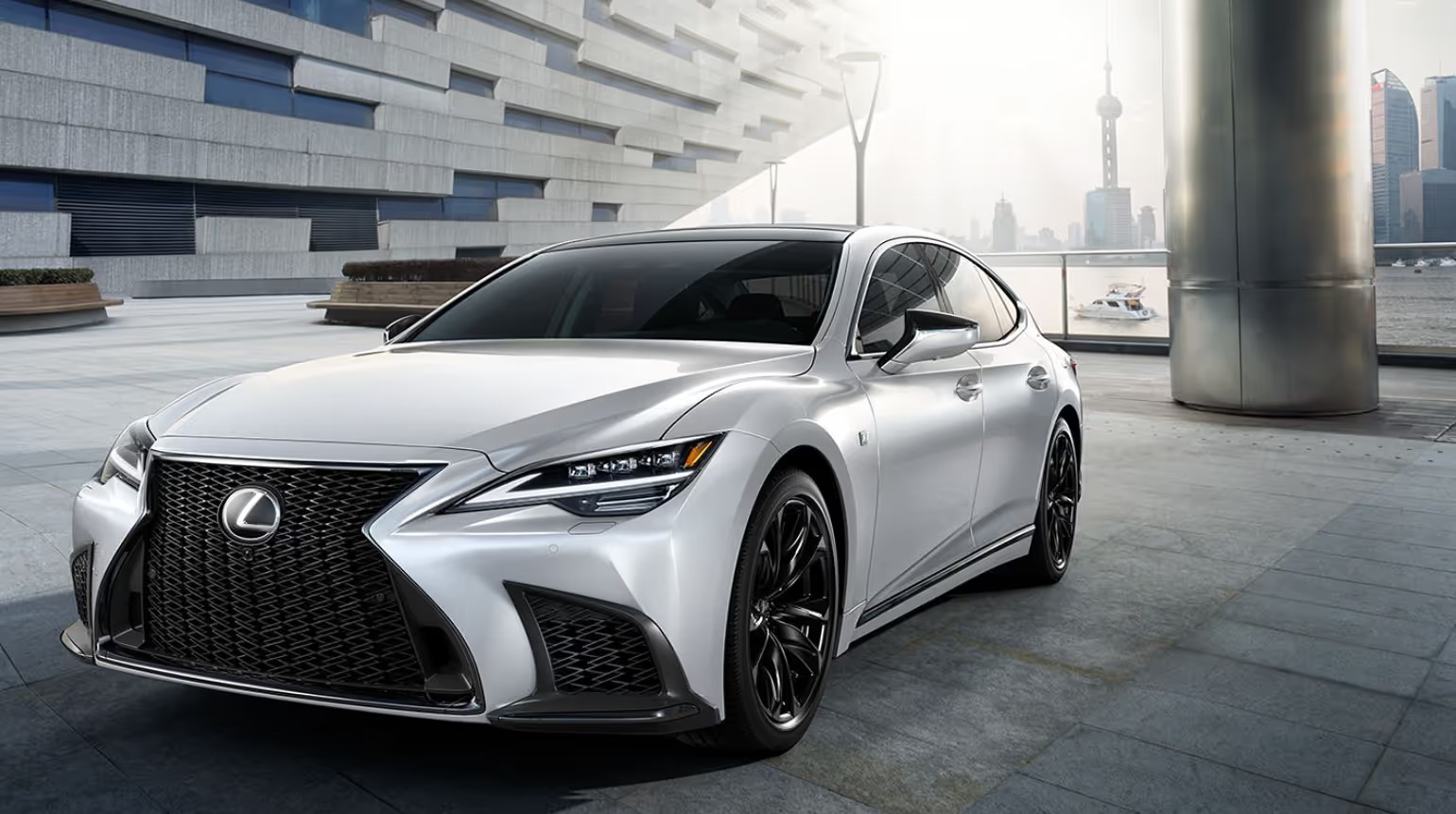
3. Lexus LS
Luxury and durability do not always go hand in hand in the automotive world, but the Lexus LS is an exemplary exception, particularly when it comes to its radiator system. The Lexus LS, renowned for its plush interiors and refined ride, also boasts a cooling system engineered to withstand years of rigorous use without compromising reliability.
Lexus employs high-quality materials such as a large, corrosion-resistant aluminum radiator core combined with reinforced composite tanks, engineered to endure the substantial thermal loads generated by the LS’s powerful V8 and V6 engines.
These radiators undergo rigorous testing during development, including exposure to extreme temperature swings, mechanical vibration, and road debris impact, ensuring the system maintains its integrity under a variety of real-world conditions.
The design philosophy behind the LS radiator focuses not just on immediate cooling efficiency but also on long-term durability, using coatings and sealants that prevent internal and external corrosion, two common causes of radiator failure in luxury vehicles with complex engine bays and tight spaces.
The Lexus LS’s cooling system is also a marvel of engineering integration, featuring a multi-tiered cooling strategy that optimizes radiator performance. Rather than relying solely on a single radiator, the LS often uses a combination of primary and secondary radiators to distribute the cooling load, as well as additional coolers for the transmission and other subsystems.
This division of labor reduces the thermal burden on any one radiator, extending its service life. The cooling fans are sophisticated, often dual electric units that modulate speed according to sensor inputs monitoring engine and ambient temperatures.
This ensures the radiator is always operating within an ideal temperature range, preventing overheating without unnecessary wear from constant high-speed fan operation.
Lexus engineers also carefully design the airflow path through the front grille and engine bay, minimizing turbulence and maximizing the volume of cool air passing through the radiator. This precise airflow management reduces heat soak and stress on the radiator fins, helping the component remain effective and intact for hundreds of thousands of miles.
Maintenance accessibility, often overlooked in luxury cars, is another critical factor contributing to the Lexus LS radiator’s longevity. Despite the vehicle’s opulent design, Lexus engineers have ensured that the radiator and related cooling system components are reasonably accessible for inspection and servicing.
This design choice encourages adherence to recommended coolant flushes and system checks, which are essential for preventing internal radiator clogging or corrosion from coolant contaminants. The use of high-quality, manufacturer-recommended coolant fluids further preserves radiator condition by inhibiting rust and scale formation.
Additionally, Lexus’s comprehensive warranty and service programs provide peace of mind and incentivize owners to maintain their vehicles properly.
The combination of premium materials, intelligent design, and service-friendly engineering means the LS’s radiator remains robust even as the vehicle accumulates significant mileage. Owners of the LS frequently cite the car’s long-lasting cooling system as a factor in the vehicle’s impressive durability and sustained performance.
The long-term benefits of the Lexus LS radiator durability manifest in more than just mechanical reliability—they also enhance the overall ownership experience. A stable and efficient cooling system supports the LS’s smooth, powerful engine operation and consistent fuel efficiency, which are hallmarks of luxury driving.
Drivers benefit from a quiet cooling system that does not intrude upon the serene cabin environment, thanks to the careful engineering of fan noise and vibration control. Furthermore, a radiator that never lets the engine overheat contributes to lower emissions and reduced wear on other engine components, supporting Lexus’s reputation for both environmental consciousness and quality.
The LS’s radiator longevity reassures owners that their investment in luxury also buys peace of mind and reduced maintenance costs over time. This harmonious blend of performance, refinement, and durability makes the Lexus LS a standout example of how a luxury vehicle’s radiator can last as long as the car itself, defying the notion that luxury and longevity are mutually exclusive.

4. Subaru Outback
The Subaru Outback is often praised for its rugged versatility and ability to perform reliably in some of the most challenging environments, and its radiator is a crucial component that supports this capability.
Unlike traditional sedans, the Outback’s unique boxer engine layout requires a cooling system specifically tailored to handle the engine’s low profile and horizontally opposed cylinder design.
To address these demands, Subaru equips the Outback with a radiator that is larger than average in both core size and surface area, enhancing heat dissipation and allowing the system to operate with reduced thermal stress.
The radiator core is usually constructed from corrosion-resistant aluminum with reinforced plastic tanks designed to endure harsh conditions, including mud, water, and road salt.
This rugged construction is essential for drivers who regularly take their Outbacks off-road or through inclement weather. The result is a radiator that withstands not only normal wear and tear but also the added physical and thermal challenges of adventurous driving, contributing to the vehicle’s reputation for longevity and resilience.
One of the defining features of the Outback’s cooling system is its dual electric fan setup, which provides robust airflow control in a variety of demanding scenarios. The fans are governed by intelligent sensors that monitor coolant and engine temperatures in real-time, adjusting fan speeds to maintain ideal thermal conditions.
This prevents the radiator from overheating during strenuous activities like towing heavy loads, climbing steep inclines, or crawling through off-road terrain where natural airflow is minimal. The dual-fan arrangement also aids in quickly cooling the radiator after the engine is turned off, reducing heat soak that can accelerate radiator wear.
Complementing this setup is a precisely calibrated thermostat that regulates coolant flow to ensure the radiator engages only when necessary, minimizing unnecessary thermal cycling and stress.
Subaru’s engineers have fine-tuned these elements to create a cooling system that operates efficiently across a wide range of climates and altitudes, essential for the Outback’s global appeal. The cooling system’s durability is a direct contributor to the Outback’s long track record of reliability in tough conditions.
Subaru also prioritizes ease of maintenance in the Outback’s radiator design, recognizing that rugged vehicles require accessible servicing to remain dependable. The engine bay layout provides sufficient space around the radiator, enabling straightforward access for coolant changes, hose inspections, and radiator cleaning—vital for preventing the accumulation of dirt or debris that could impede cooling efficiency.
Subaru’s recommended maintenance schedule emphasizes regular coolant replacement with antifreeze formulations designed to protect against corrosion and freezing damage, preserving the radiator’s internal passages. Furthermore, the availability of quality OEM and aftermarket parts ensures that repairs or replacements, if necessary, can be done economically and effectively.
Many Outback owners report minimal radiator issues even after driving beyond 150,000 miles, attributing this to both Subaru’s durable construction and the ease of upkeep. The thoughtful maintenance considerations embedded in the Outback’s design empower owners to keep the radiator—and the entire cooling system—in excellent condition over the vehicle’s lifespan.
The Subaru Outback’s radiator reliability significantly enhances its reputation as a dependable crossover for adventurers, commuters, and families alike. Its ability to maintain consistent cooling performance under challenging circumstances means drivers face fewer unexpected breakdowns, contributing to peace of mind during long road trips or off-road excursions.
Additionally, a durable radiator supports the engine’s overall health, fuel efficiency, and emissions control, aligning with Subaru’s commitment to producing environmentally responsible vehicles. This durability also contributes to the Outback’s strong resale value, as prospective buyers recognize the advantages of a well-engineered cooling system.
Ultimately, the radiator’s toughness and efficiency are integral to the Outback’s identity as a vehicle that can handle diverse and demanding driving conditions while maintaining long-term reliability—a hallmark of Subaru’s engineering ethos.
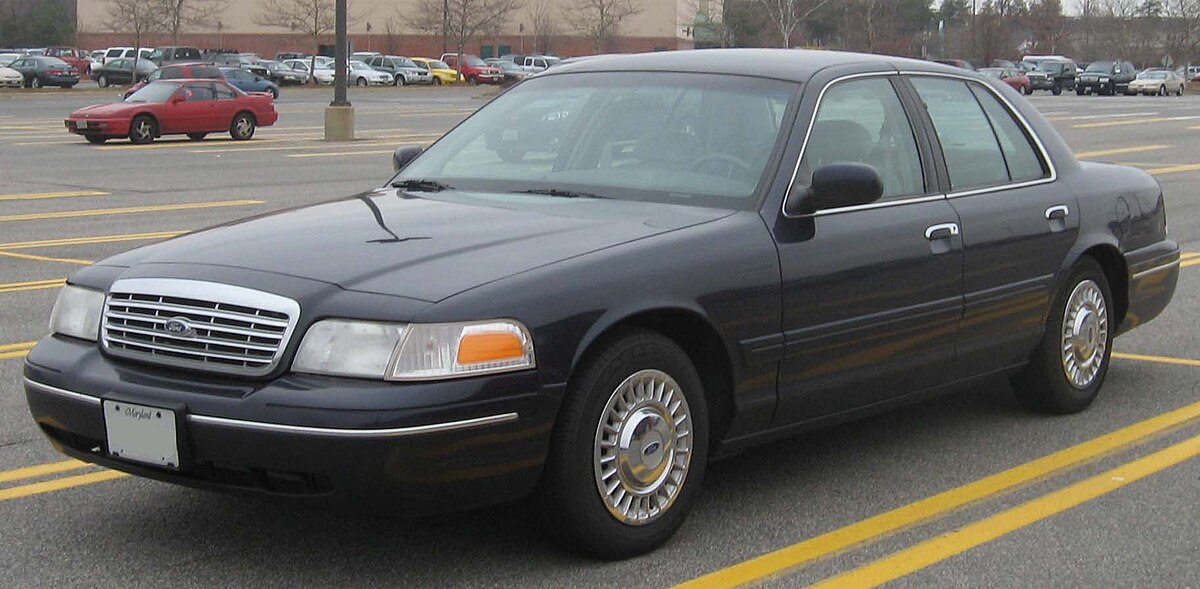
5. Ford Crown Victoria
The Ford Crown Victoria has cemented its place as one of the most durable and reliable full-size sedans ever produced, largely thanks to its straightforward and robust cooling system centered around a resilient radiator.
Widely used as police cars, taxis, and fleet vehicles, Crown Victorias are subjected to harsh operating conditions including extended idling, high-speed pursuits, and relentless stop-and-go city driving.
The radiator in this vehicle is built to withstand these demands, featuring a heavy-duty aluminum core with thick cooling fins designed for maximum heat rejection, paired with reinforced plastic tanks engineered to resist cracking and coolant leaks over extended use.
The design philosophy behind the Crown Victoria’s radiator prioritizes longevity and ease of maintenance rather than cutting-edge technology, resulting in a component that has proven capable of lasting hundreds of thousands of miles with proper care.
This durability is part of the reason why many Crown Victorias remain on the road today, years after production ceased, with their original cooling systems still intact and functioning effectively.
A contributing factor to the Crown Victoria’s radiator endurance is its cooling system’s conservative engineering relative to more modern vehicles with turbocharged or smaller displacement engines. The naturally aspirated V8 engine produces consistent thermal loads, allowing the cooling system to be tuned for steady-state operation rather than frequent spikes in temperature.
The radiator is mounted in a spacious engine bay that promotes excellent airflow, while an electric fan controlled by a reliable thermostat provides necessary cooling when the vehicle is idling or moving slowly. The hoses, clamps, and water pump are all built to commercial-grade specifications, ensuring the radiator receives a steady supply of coolant and maintains proper pressure throughout its service life.
The system’s simplicity and robustness mean fewer potential failure points, contributing to the Crown Victoria’s reputation as a “bulletproof” vehicle. Fleet operators and law enforcement agencies have long praised the Crown Victoria for its minimal cooling system issues, attributing this to the radiator’s rugged construction and the system’s straightforward design.
Maintenance practicality is another cornerstone of the Crown Victoria’s radiator longevity. The radiator’s accessible location within the engine bay allows for quick inspection, coolant replacement, and hose maintenance, reducing labor costs and encouraging regular upkeep.
Given the vehicle’s extensive use in commercial fleets, parts availability is high, and replacement radiators and components are affordable and easy to source. This accessibility makes it feasible for fleet managers and private owners alike to adhere to recommended maintenance intervals, which is critical for preventing corrosion, sediment buildup, and overheating.
Many Crown Victoria owners report that radiator-related problems are rare and usually result from neglect rather than inherent design flaws, reinforcing the radiator’s reputation as a durable and reliable component.
The Crown Victoria’s radiator is a shining example of how rugged design and serviceability can combine to produce a cooling system that stands the test of time, even under extreme conditions.
The long-term benefits of the Crown Victoria’s radiator durability extend beyond mechanical reliability to influence the vehicle’s iconic status and overall value. A radiator that consistently performs its cooling duties prevents engine overheating, which can lead to catastrophic failure and costly repairs.
This reliability has made the Crown Victoria a favorite among police departments and taxi fleets, where vehicle downtime translates directly to lost revenue and operational inefficiency.
Furthermore, the cooling system’s resilience supports the longevity of the V8 engine, enabling these vehicles to reach high mileage milestones that few other sedans can match. For private owners, this means dependable daily transportation and lower ownership costs over time.
The Crown Victoria’s radiator durability, combined with its overall mechanical simplicity and toughness, exemplifies a bygone era of automotive engineering where reliability was paramount. Even today, the Crown Victoria remains a benchmark for rugged, long-lasting radiators that effectively last forever under normal and demanding use.
Also Read: 5 Toyota Hybrids With Long Lives and 5 That Constantly Glitch
Radiators are far more than just metal boxes filled with coolant—they are vital guardians of engine health and performance. The vehicles highlighted in this article as having radiators that “last forever” showcase the pinnacle of automotive engineering, where attention to detail, quality materials, and smart system design converge to create components capable of enduring the harsh realities of daily driving for hundreds of thousands of miles.
Models like the Toyota Corolla, Honda Accord, Lexus LS, Subaru Outback, and Ford Crown Victoria exemplify how manufacturers can build cooling systems that not only meet but exceed reliability expectations.
Their radiators consistently demonstrate resilience against corrosion, cracking, overheating, and mechanical fatigue, thanks to robust aluminum cores, durable composite tanks, intelligently managed coolant flow, and efficient thermal regulation systems.
This longevity translates directly into fewer breakdowns, lower repair costs, improved engine longevity, and an overall better ownership experience.
Conversely, the vehicles known for frequent overheating serve as cautionary tales about the consequences of design compromises, inferior materials, and poor integration of cooling components.
Chronic radiator problems in these models often stem from thin cores susceptible to clogging, inadequate airflow management, unreliable water pumps, and cooling fans that either underperform or run excessively.
These issues create a vicious cycle where the radiator becomes overworked and stressed, accelerating wear and ultimately leading to failure. Drivers of such vehicles face increased maintenance costs, unexpected breakdowns, and the risk of severe engine damage due to overheating.
Recognizing these pitfalls underscores the importance of choosing vehicles with proven cooling system designs or investing in regular maintenance to mitigate potential issues.
Ultimately, radiator durability is a reflection of broader automotive engineering philosophies. Vehicles designed with simplicity, quality, and serviceability in mind tend to have cooling systems that withstand the test of time.
This means manufacturers that prioritize using corrosion-resistant materials, provide easy access for maintenance, and optimize cooling system components to work harmoniously often produce cars with radiators that “last forever.”
The consumer benefits are clear: reliable cooling, reduced risk of overheating, lower ownership costs, and a longer-lasting vehicle overall. Whether it is the dependable Toyota Corolla that has become a global icon of reliability or the rugged Subaru Outback built to brave tough environments, these cars exemplify how radiator longevity contributes to lasting automotive value.
As automotive technology continues to evolve, new materials and cooling strategies promise even greater durability and efficiency. However, the fundamental principles that have made these five vehicles’ radiators so dependable remain relevant.
Choosing a vehicle with a proven track record of radiator reliability is a wise decision for anyone seeking peace of mind and long-term performance. For current owners of vehicles prone to overheating, understanding the common causes can guide proactive maintenance and repairs, potentially extending radiator life and protecting the engine.
In the end, the radiator might not be the flashiest component under the hood, but its importance cannot be overstated. It is a silent sentinel, working tirelessly to keep your engine cool, your drives smooth, and your journeys safe. Investing in a vehicle with a durable radiator or maintaining your current one carefully pays dividends in reliability and satisfaction.
Remember, a car’s radiator is often the frontline defense against the costly consequences of engine overheating—choose wisely, maintain regularly, and enjoy the peace of mind that comes with a cooling system built to last.

